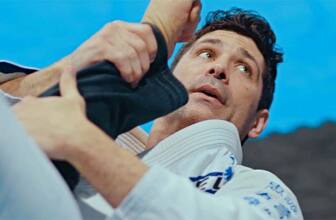
From the cinematic partnership of Akira Kurosawa and Toshiro Mifune comes Yojimbo, a classic samurai western influenced a generation of actors and filmmakers, and is generally regarded as their finest work.
Trailer
CAST
Toshiro Mifune is the centrepiece of this film in his thirteenth collaboration with Kurosawa. Charming and deep voiced, Mifune is perfect as the opportunistic rōnin, with plenty of charisma and thespian skill to boast making him one of Japan’s most revered modern actors.
PLOT
As the sun slowly sets on the last of Japan’s feudal rulers, a nameless rōnin wanders into a small town ruled by two competing gangsters. Sensing an opportunity to make some money the wanderer who calls himself Sanjuro manipulates both sides into paying top money for his services as a bodyguard (yôjinbô). He continues to play both sides against the middle until suddenly, what was initially an amusing way to make some money turns into a mission to right a wrong and exact brutal vengeance when his morals are called into question.
ACTION
Much of the film centres on Sanjuro and his chess-like game of manipulating both gang leaders to pay him extra money for protection, supported by his deadly swordsmanship. Sanjuro swiftly cutting down an opponent then resheathing his sword whilst confidently walking on by with a wry smile epitomises the arrogance of a seasoned samurai.
The use of widescreen greatly enhances the dramatic impact of both the story and the action throughout giving the film an epic feel. This impact is evident where the two rival armies face each other in the town square and scenes where Sanjuro holds the focus as the forces gather in the background.
Kurosawa further adds to the tension-fuelled anticipation by conveying the town as a community of fearful eyes with an uncertain view of certain danger.
From the moment a Katana is unsheathed, a skillful clash of steel ensues as frantic as the war cries that follow. Some splashes of blood and a severed a limb indicate a successful cut but the focus stays on the nature of the confrontations and skills on show rather than the gore. The finale is fast paced and ferocious yet well-crafted so the viewer sees clearly every attack, defence, strike, slice and cut.
SUMMARY
Both the film’s story and the character of Sanjuro gained international appeal influencing US and European filmmakers and entertainers. It conveys a real sense of place and time, that of the sad decay of the Samurai from proud rulers, and warriors led by honour to exploitative mercenaries and businessman profiting from corruption.
Kurosawa’s skill as filmmaker is evident, not just in grand battle scenes but also in the use of the setting with objects to tell the story. Shutters, doors and other foreground objects are used to bring unfolding events into view and then obscuring them as a visual narrative, and the town’s desolate setting reflects the plight of the declining samurais.
Yôjinbô is Kurosawa’s rendition of the classic western combined samurai story, and remains one of his most popular films in Japan.
TRIVIA
- Lawrence Kasdan’s “The Bodyguard” makes several nods to the film. Aside from the film’s title, Kevin Costner’s character is in effect a modern day rōnin, and even takes the late Whitney Houston to see the film on their first date.
- Kurosawa and Mifune reunited for Sanjuro (1962) with Mifune reprising the role of the nameless rōnin.
- Remade by Sergio Leone as “A Fistful of Dollars” starring Clint Eastwood, and Walter Hill as “Last Man Standing” set during America’s prohibition years starring Bruce Willis as a mysterious warrior for hire.







[…] week’s reviews include Kung-fu Kingdom’s Yojimbo review and Stanley W. Rogouski’s thoughts on Throne of Blood and The Bad Sleep […]